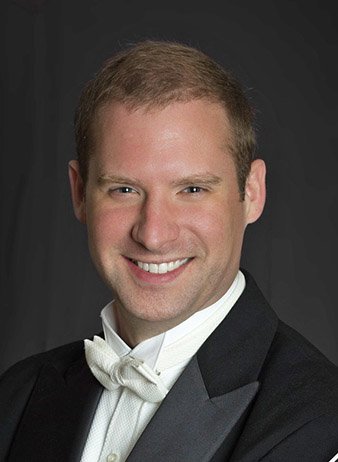Boston Cecilia wraps season with a diverting program of American music
Boston Cecilia concluded its 143rd season Sunday afternoon in Brookline at All Saints Parish with a survey of four American choral works written in the last half-century.
The earliest selection was John Corigliano’s 1963 Dylan Thomas setting, Fern Hill, heard, on Sunday, in its arrangement for strings, piano, and voices.
Corigliano wrote Fern Hill when he was in his mid-twenties and it’s a fairly agreeable and straightforward essay, with outer thirds marked by episodes of gentle diatonicism, while the central part is lilting and warm-toned. The composer’s ear for dramatic effects is apparent, both in the discreet transitions between the work’s ensembles (full choir, semi-chorus, and mezzo-soprano soloist) and in the bittersweet dissonances of the closing pages.
Cecilia’s music director George Case led a lush, fluent performance on Sunday, one that always moved with a good sense of direction. The swelling climaxes that lead into Fern Hill’s final third were full-bodied and robust, as were the Cecilia’s accounts of the music’s unison passages. Margaret Lias brought bright tone, fresh intensity, and excellent diction to the mezzo-soprano solos.
After the Corigliano came Jake Runestad’s The Hope of Loving, a 2015 chorus-and-strings setting of texts from Daniel Ladinsky’s Love Poems from God. The work’s six movements are mostly reflective, a bit earnest, and, at a couple of points, seem to suggest the stylistic influence of Aaron Jay Kernis.
They’re also pleasingly concise and have moments of winning personality. The aphoristic central one, Hafiz’s “Wondrous Creature,” provided one of the latter with its pithy wrap-up. So did the busy string accompaniments, cloud-like choral textures, and energetic bursts in the second, St. Francis of Assisi’s “Wild Forces.” Both of those were up-tempo. In the slower movements – the lyrical, chromatic instrumental fugue in “The Heart’s Veil” excepted – Runestad’s writing too often lacked a distinct profile.
Even so, Case led Cecilia in a solid reading of The Hope of Loving. The ensemble’s textures and diction were clear and soloists Elisabeth Swanson, Connor Vigeant, and Corey De Tar gave strongly blended accounts of their respective parts.
Despite some muddy diction, the choir gave a well-balanced, spirited interpretation of Eric Whitacre’s Five Hebrew Love Songs. A 2001 reworking of a song cycle on texts by his wife, Hila Plitmann, it’s unabashedly lyrical but with a couple tricks up its sleeve.
In the second movement, “Kalá kallá,” a lively dance intrudes on the otherwise introspective proceedings. Aleatoric chanting, spoken recitation, and a strong sense of atmosphere mark the fourth, “Éyze shéleg!” And the finale, “Rakút” brings the piece to a stately conclusion with some vaguely Hassidic melodic embellishments.
Tarik O’Regan’s 2004 Triptych closed the afternoon.
A juxtaposition of spiritual and philosophical poetry spanning centuries, its opening “Threnody” contrasts writings by William Penn, Muhammad Rajab Al-Bayoumi, William Blake, and Psalm 133. O’Regan’s settings alternate strict, austere passages with pulsing, rhythmic ones and, for Blake’s verse, melismatic phrases.
In the second movement, choir and solo soprano echo lines from the 17th-century poem “The Gates of Repentance” plus a Milton excerpt, while the finale combines Indian sacred texts with words by William Wordsworth and Thomas Hardy.
On Sunday, the Cecilia singers’ enunciation was vague in the thick textures of “Threnody,” but there was an appealing shape to their rendering all the same. Madison Spahn delivered her second-movement solos with golden tone, effortlessly floating them over the choir. And the finale provided an intense, cathartic release.
Some suspect intonation during the second movement aside, the pick-up string orchestra provided Triptych with a lively accompaniment, especially in the finale’s shimmering, John Adams-like patterns.
Posted in Performances
